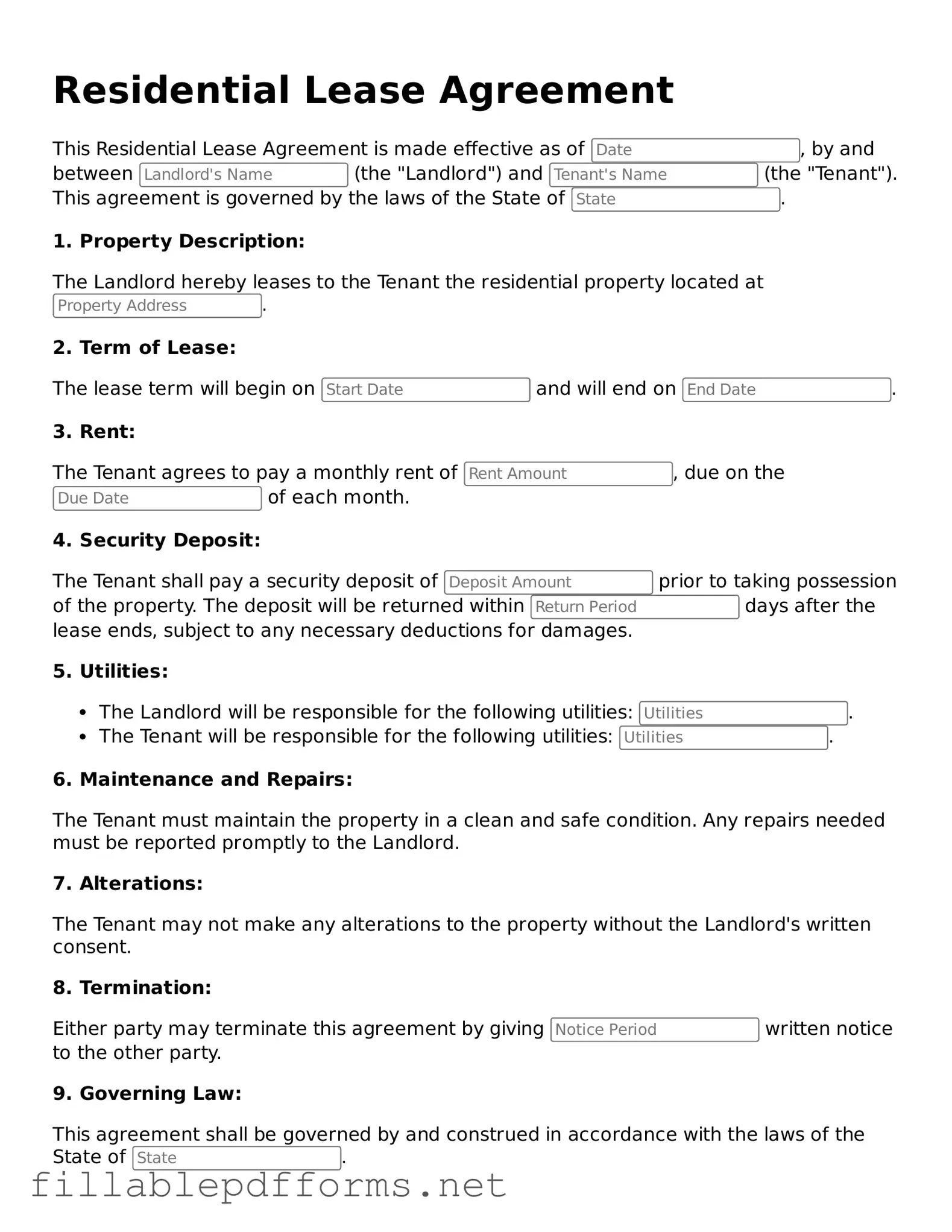Blank Residential Lease Agreement Template
A Residential Lease Agreement is a legally binding contract between a landlord and a tenant, outlining the terms and conditions of renting a residential property. This document serves to protect the rights and responsibilities of both parties, ensuring clarity and mutual understanding. Understanding its components can help tenants and landlords navigate their rental relationship more effectively.
Launch Editor Here
